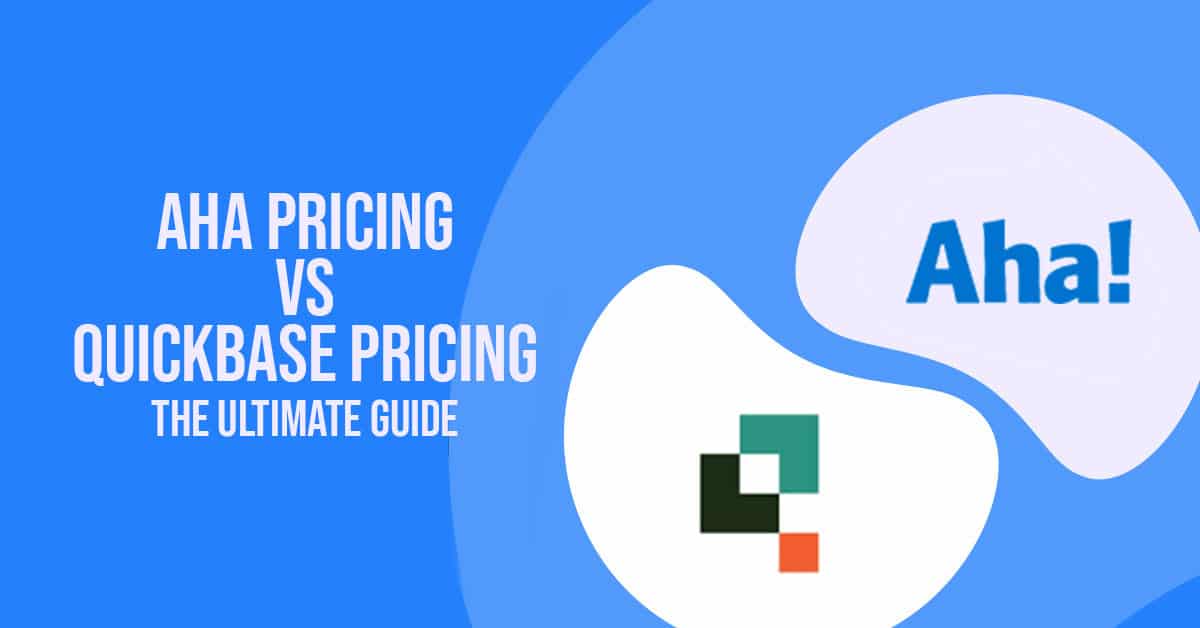The Aha software was founded in 2013 and now it supports 500,000 users with its advanced technology to materialize ideas into business plans. Aha integrates a human-centered approach so that growth is naturally promoted. The Quickbase software started in 1999 and incorporates ESG (Environmental, Social, Governance) policies. It prioritizes communication between teams while integrating tools for development.
The Aha pricing vs Quickbase pricing largely differs from each other. However, the costs are dependent on the features so let’s dive deeper to see what makes each special.
What to Expect from Aha Software?
The Aha software has various features that cater to idea management, development, roadmaps, and creation. As far as development is concerned, it can be used to customize your workflows entirely with the integration of other tools. Moreover, you can keep a backlog where all the steps needed to develop a project are clearly defined. You can also see the capabilities of the team members as you allocate work in real-time.
Aha Pricing
The Aha pricing can be paid monthly or annually. However, the plans are divided on the basis of products and you can further choose which plan has the features you require. Let’s take a look at the monthly costs of the products.
1. Ideas
If your goal is to organize ideas for your business, you can choose either Essentials or Advanced payment option. The essentials plan, as the name suggests, supports the most basic tools required for idea management. For example, users can set portal access, match the brand, and add unlimited portal users.
Moreover, it can be utilized to score ideas on the basis of their importance or workability. Similarly, your users will be able to prioritize requests so that the most important stuff gets done on time.
On the other hand, the advancement features a variety of its own tools besides incorporating the essentials. For instance, there is portal translation, idea forms, empathy sessions, in-app community feedback, and customer segments available. The cost of the first option is $49 and the second option costs $74 per month.
2. Roadmaps
The roadmaps option has four diverse plans. The option for startups is accessible to businesses that meet the bare minimum requirements provided by the website. The next option is premium and it is charged $74. The premium can be used to set strategy, build roadmaps, create plans, and capture ideas.
It can also be used to initiate whiteboard concepts and prioritize work in addition to 30+ tool integration. Next comes the enterprise plan which costs $124. The special thing about this plan is that you do not need to pay for all of the users as it is suited for workspace owners and contributors. It can be used to invite unlimited viewers and reviewers for collaborative tasks.
The enterprise option only supports annual billing and gives more control to workspace owners through automation rules, custom tables, work requests, and product concierge.
3. Develop
The third product supports the development and facilitates users with two plans. The essentials cost $12 and can be used to customize everything. Moreover, you can define user stories and even create a prioritized background. Moreover, users can coordinate their sprints to ensure that everyone is on the same page. The Kanban integration gives users the ability to manage projects through visual tools. Meanwhile, whiteboard concepts and data exchange through wiki are also possible.
The advanced payment plan has a single-sign-on system, automation options, and analytics. The payment for this plan is $24.
Aha Demo
In order to access the Aha demo, all you need to do is to fill out a simple form and you will receive updates within two hours.
What to Expect from Quickbase Software?
A comprehensive Quickbase review would be sufficient to learn about the features that make it stand out. The Quickbase software is a low-development program so that complex business applications are simplified. It can further reduce IT costs as the traditional burgers are eliminated. You can further maintain control and governance through one platform rather than having to rely on different applications. And finally, you can utilize it for continuous deployment and integrate changes in real-time.
Quickbase Pricing
The Quickbase software has four pricing options.
Free Trial
The free trial is a limited plan that can be accessed for 30 days. You can use this plan to learn about the platform and see how the software can be utilized for your requirements. The free trial supports custom app building and accesses app exchange. You can also collaborate across teams so that the pace matches.
Team
The team plan costs $600 per month and it is charged annually. It integrates workflow automation as well as supports data integration. You can use mobile-ready applications to set up your system too. The flexible licensing option can be used to customize the apps as you want them to be.
Business
The cost of the business plan starts at $2,000 and it can be used to create up to 100 customizable apps. It includes all the features that are offered by the Team in addition to its own. For starters, it can be integrated with IAM systems. Furthermore, the audit logs give you access to your users’ activities and you can make changes to data and apps. Another supportive feature of this Quickbase pricing is that you can enter data while offline. The users can easily update Quickbase while they are on the go even if they lack internet services.
Enterprise
The last option is enterprise. Those who opt for this pricing option can customize their plan entirely based on the number of users and the features they want to access. Moreover, you can integrate Quickbase Integrations and Cloud Services with on-premises data as well.
Quickbase Demo
The Quickbase demo is a live session to help you understand how best to optimize the features for your business.


